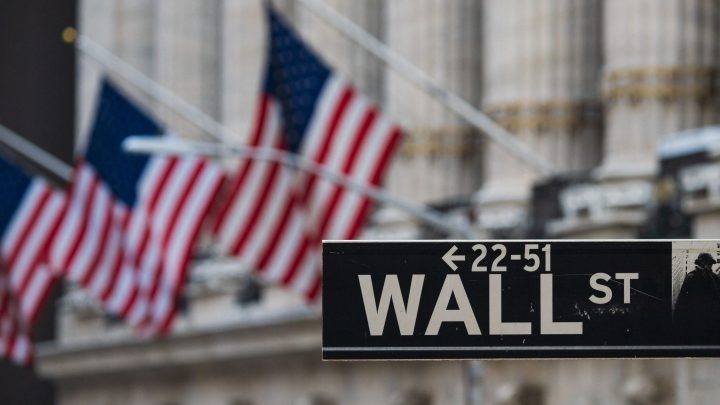
An inverted yield curve usually signals recession. Is it wrong this time?
An inverted yield curve usually signals recession. Is it wrong this time?

You know that once-mythical soft landing thing that Chicago Federal Reserve President Austan Goolsbee referenced in his recent interview with Marketplace? It’s the thing where inflation is tamed but the economy stays just fine. Well, more and more economists are convinced that’s actually going to happen.
Goldman Sachs recently put the odds of the U.S. entering a recession in the next 12 months at just 15%, down from a projection of 35% in March.
If Goldman Sachs is right, that means the bond market might be wrong. For well over a year now, we’ve had what’s known as an inverted yield curve, meaning the interest paid by 10-year Treasury bonds has been lower than shorter-term debt, like two-year Treasurys.
Historically, inverted yield curves have been a pretty reliable indicator that a recession is likely.
In normal times, investors receive a higher interest rate from longer-term government debt, which makes sense — the longer you lock up your money, the more you want in interest.
But when investors get a better annualized return from a three-month loan to Uncle Sam than a 10-year loan, something is off.
“Investors think that tomorrow will not be as rosy as today, and there’s a high likelihood that rates will come down, so that’s typically why you tend to see inversions,” said Olu Sonola with Fitch Ratings.
Basically, bond investors are betting that a recession is coming, which means the Fed will lower interest rates to juice a recovery.
“When you think of the last 10 recessions, eight of the last 10 were preceded by an inverted yield curve,” Sonola said.
Parts of the yield curve started inverting in July 2022, yet the economy is still humming along. It’s too early to start calling the bond market a liar, said Menzie Chinn, a professor at the University of Wisconsin-Madison.
“The lag time between when you get the inversion and when you have the recession is variable, and so it could be anywhere from six to eight months to 18 months,” he said.
But another possibility is that this economy is just built differently after three years of the pandemic, said Scott Ladner with Horizon Investments.
“We entered this period really from a point of strength,” he said. “Companies don’t have to borrow money, people don’t have to borrow money. They’re in the best shape they’ve been in in 40 or 50 years.”
Ladner added that when he takes a microscope to the yield curve, it’s not predicting a recession per se — it’s just predicting the Fed getting inflation back to normal.
There’s a lot happening in the world. Through it all, Marketplace is here for you.
You rely on Marketplace to break down the world’s events and tell you how it affects you in a fact-based, approachable way. We rely on your financial support to keep making that possible.
Your donation today powers the independent journalism that you rely on. For just $5/month, you can help sustain Marketplace so we can keep reporting on the things that matter to you.











